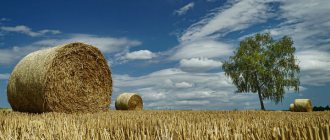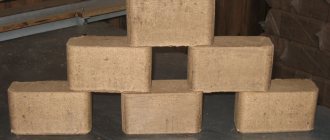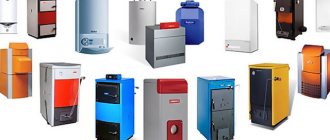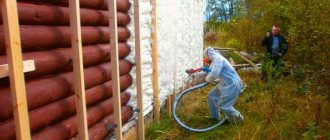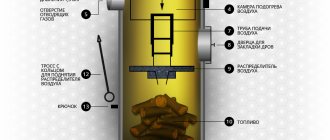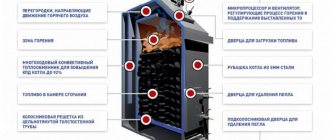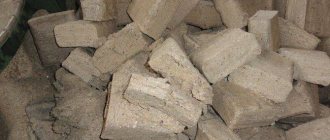The instability of the energy market forces us to look for alternative solutions and remember the democratic nature of coal dust. It is unprofitable to use it in its pure form: it falls through the grate bars or gets baked, clogging the firebox. Additives to firewood have a pronounced effect, but you need to sprinkle it often and little by little so as not to disrupt the circulation of gases. And only coal briquettes compressed from dust are easy to use and burn with high heat output.
Coal briquettes have a long burning property
More about briquetting technology
At the beginning of the last century, Russian researcher A.P. Veshnyakov proposed pressing the fine fraction into elements of a certain shape and size, which in terms of heat transfer were not inferior to the coal itself. The idea has found wide application both in everyday life and in industry.
Coal briquettes on a screening belt
Today, pressed coal is classified depending on the material, environmental friendliness, security, shape and type of packaging. But the two main types are:
- For production with the addition of binding components.
- For home use without additives.
It is important to know that industrial briquettes should absolutely not be used in everyday life. When they burn, a large amount of toxic substances are released, for which special equipment is responsible for removing them under production conditions. Previously, additives in the form of molasses or starch were used in the production of household briquettes. But this technology is a thing of the past.
Where to use and where not to use
It is mainly used for heating needs in everyday life, but recently it has become more often used in metallurgical and chemical plants, as well as power plants and boiler houses. In general, briquettes can be used in any enterprise or in a private home where equipment that runs on solid fuel is installed - coal, firewood, etc.
But you should know that under no circumstances should you use a charcoal briquette to start a fire in barbecues, grills and other ovens for cooking where there is direct contact of smoke with food. Such equipment is simply not designed for the temperature produced by this fuel, and it will fail, and the caustic and harmful substances contained in the coal released will make the food unfit for consumption.
Types of briquettes
Let's figure out what types of briquettes for heating exist and their components. There are several types of such briquettes:
- wood briquettes;
- peat briquettes;
- briquettes from hard coal.
Let's take a closer look at each type of fuel.
Wood briquettes
This type of briquettes is made from sawdust and other materials - waste from the wood processing industry. The raw materials are first heated and then pressed. To do this, use high pressure on the chips. Under pressure from the load, the wood releases lignin. It acts as glue. After it hardens, the mass does not lose its shape and is quite durable to the touch. Lignin is a natural material and does not cause any harm to the human body. Wood briquettes have some important characteristics. Fuel moisture content is 10%. As you can see, the moisture content of the finished material is several times lower than wood. At the moment of combustion, sawdust releases 4400 kcal/kg. If we compare this indicator and heating with sawdust with burning coal, we note that the indicator is 3910 kcal/kg.
Wood briquettes
The density of wood is not the same, it all depends on the original type of wood from which it was obtained. It is also important that when a wood heating briquette is burned, a small amount of ash remains. Its figure does not exceed 0.12%. While coal leaves behind 20% ash. Wood briquettes for heating are convenient because there is no crackling sound during combustion and they do not produce a spark. The formation of smoke is minimal and at the same time this type of fuel is capable of releasing heat into the room for several hours. A completely wood block burns out in 4 hours. If you do not remove the ash and coals, you can use them for cooking.
The most important thing about this type of fuel is that heating with sawdust with your own hands is safe in all respects for humans.
If you compare it with coal, when burned, wood produces several times less carbon monoxide than other materials. The form in which wood blocks are produced is convenient in practice. This allows you to not take up a lot of space for fuel storage. Euro firewood is suitable as fuel not only for solid fuel boilers. They can be used to start a fire outdoors and to light a fireplace. Also, firewood in the form of wood blocks is easy to control consumption.
Fuel briquettes can be used for cooking on the grill
You can calculate how many blocks you need to heat a certain area. Knowing this value, you can easily determine the volume of fuel purchased for the season. Remember, when buying solid wood, you pay not only for the material, but also for water and air. As you can see, heating with pressed sawdust is not only profitable from an economic point of view, but also safe in terms of health. You also have the opportunity not to cut down forests and other green spaces in order to heat your house with sawdust.
Peat briquettes
Peat briquettes are produced similarly to wood briquettes. The peat is initially dried and pressed. If peat is exposed to high temperatures, it begins to compact and turn into blocks. This form is convenient for storing and delivering cargo. Peat briquettes can be used to heat all types of stoves. This type of fuel is characterized by high thermal output over a long period of time. As you can see, peat briquettes for heating are another option for replacing solid wood for heating premises. If your boiler allows you to regulate the air supply, then the burning time of peat blocks increases to 8 hours.
Coal for heating
Peat briquettes
This fuel will be a good replacement for another fuel option for heating rooms at night. At this time of day, it is important for you to keep the air temperature in the room at a level comfortable for normal life. Let us remind you once again about the form. Peat briquettes for heating are small in shape for easy transportation and for heating the stove. In order for the boiler to constantly heat the water, it is enough to add new briquettes at regular intervals.
Ash after combustion of peat briquettes can be used as fertilizer for phosphorus feeding of plants on the site.
This fertilizer alternative will appeal to many gardeners. Let's figure out what is more profitable - firewood or pellets. To buy a ton of peat blocks, you have to pay approximately 6,000 rubles. A ton of firewood of any type of wood costs 2,000 rubles. Let's recalculate the heat transfer rates of these materials. It turns out that 2.4 kWh/kg comes from firewood and 5 kWh/kg comes from burning pellets. As you can see, it is much more profitable to purchase artificial fuel. Also, the practicality of peat briquettes lies in the fact that there is no need to chop firewood into convenient logs, dry them and allocate large areas for storage.
Features of heating with wood
SpdFORUMHOUSE user
I heat my house with a 30 kW solid fuel boiler. At first I tried throwing wood into the firebox. Did not like. They burn out in about 30 minutes, maximum in 1 hour. I didn’t get a small amount of coal for testing. I bought fuel briquettes made from sawdust. The full combustion chamber of a TT boiler is about 10 kg, burns for 1.5 hours from ignition to smoldering while maintaining a coolant temperature of at least + 60 °C. In the technical specifications for different boilers it is written that the operating time on one stack of firewood is from 4-8 to 12 hours. Is this real and how to achieve it? Share your experience!
According to chicken-A, in his solid fuel boiler, a full load of birch firewood (firebox volume 42 liters) burns for about 3-4 hours, and sometimes longer. The starper burns five logs for 3-4 hours. With spdim, firewood burns from 2 to 6 hours, but a lot depends on the boiler load (if you fill the firebox to the maximum - 20-22 kg), the type of fuel and its humidity.
spdimForumHouse User
I think the problem with Spd is due to wet wood, or due to the installation of softwood. I have a similar picture if you throw rotten aspen or poplar into the firebox. They burn out quickly, but you can’t get any heat from them. Good dry birch or oak wood burns as it should. Well, the house needs to be well insulated.
So, humidity and type of wood (low, medium and high density) directly affect the calorific value (specific heat of combustion), i.e. the amount of heat released during the combustion of fuel of a certain volume or mass.
For comparison:
- The specific heat of combustion of 1 kg of freshly cut wood with a humidity of about 50% is 1940 kcal or 2.2 kWh.
- The specific heat of combustion of 1 kg of dried wood with a humidity of about 20% is 3400 kcal or 3.9 kWh.
You cannot heat a solid fuel boiler with freshly cut wood. The fuel must be dried to get rid of excess water. Why is firewood stored in the woodshed and left to dry?
The optimal drying period for firewood is 2 years, after which it becomes an excellent fuel for a TT boiler.
Also, the duration of combustion and the amount of heat generated are affected by the density of wood - the ratio of the mass of wood to its volume (kg/m3).
Dense wood, such as oak, burns longer and hotter than wood of low density, such as poplar, pine, spruce.
Binders
These can be played by various components that influence the properties and quality of the final product.
Such components include:
- protein;
- coal tar;
- lime;
- clay;
- dextrin;
- soda;
- resin;
- molasses and others.
Note! The exact binder that should be used depends solely on the specific type of base raw material, as well as on how high quality it (the raw material) is.
In addition, the production technology itself may vary somewhat (including in terms of labor intensity) depending on the use of a particular substance.
COMPARISON OF OPTIONS for coal briquetting with and without binder
Coal briquetting using a binder:
- +
Suitable for any hard or brown coal - +
High productivity (up to 100 t/h) - +
Low specific energy consumption - +
Possibility of obtaining moisture-proof briquettes - +
Low cost of consumables - —
More expensive and complex equipment; binder required
Briquetting coal without binder:
- —
Applicable only to certain coals - —
Drying is required - —
Limited capacity (up to 25 t/h) - —
High specific energy consumption - —
High cost of consumables - +
No binder, simpler and cheaper equipment
The technology of coal briquetting without binder additives seems more attractive at first glance, however, at the same time, energy costs increase significantly, and the productivity and quality of the briquette decreases.
After testing, it usually becomes clear that briquetting using a binder is more economically justified, even taking into account the costs of purchasing, delivering and storing these materials.
Industrial production
Distinctive features of dust and fine coal fraction: low specific calorie content and density. But these materials are considered as cheap raw materials that make it possible to organize the production of coal briquettes. The products will have good density and heat transfer at low cost.
To produce briquettes in a factory, a special production line is used, consisting of a crusher, dryer, and press. The movement of semi-finished products between machines is ensured by a conveyor belt.
Pressed coal without additives is produced in several stages
:
- Grinding raw materials to a particle size of 6 mm and smaller.
- Drying the mixture to 15% humidity using steam and gas dryers.
- Next, the dust is cooled and fed to a stamp-type press, which acts on the mixture under a pressure of 20-150 MPa (depending on what technology is used). After this processing, the finished briquettes are sent to the finished product warehouse for storage.
The purpose of the fuel and the equipment used are the main factors influencing the size of the particles, the level of humidity and the amount of pressure under which they are turned into briquettes. At the same time, the energy intensity of the finished product directly depends on the quality of the raw materials. It is important to use the fine fraction of anthracite, and not brown or other types of coal. For strength, it is permissible to add mineral or organic additives.
Coal briquetting press
Coal briquettes can be compressed in two ways
depending on what briquetting equipment is used:
- Stamp press. The heated coal mixture is filled into special molds, in which it is compressed with a force of 100-120 MPa. After cooling, the briquettes are packaged. The finished product looks like bricks or cylinders with holes, and may look like “tablets” or “pads.” This manufacturing method is suitable for the production of briquettes in large quantities due to the high energy and financial costs.
- Extrusion machine. In this case, the plastic coal mass is pressed through the matrix by a press. A screw-pressed briquette (pini-key) made from coal dust has a cylindrical shape, resembling a “sausage”, with a calibrated hole in the middle. The technology is less expensive, but also less productive.
The technology for producing briquettes for industrial use involves the addition of cement, oil-bitumen mixture, liquid glass and others. The use of these substances in metallurgy is permitted. But you cannot buy coal briquettes with oil bitumen for heating a living space according to the requirements of the SES.
Home packaging of solid fuel
The process of artisanal briquetting differs from what occurs in a factory in its low level of mechanization and in the fact that instead of drying the original components, they are wetted. For the heating needs of a standard private house, you do not have to organize a grand production with serious energy costs and expensive equipment. It is possible to prepare three or four tons of economical solid fuel for the autumn-winter period using old-fashioned methods.
Stages of home briquette production:
- Coal dust is taken in pure form or with clay additives in a ratio of 10:1 and diluted with water until the required density is obtained. A safe clay binder prevents the destruction of finished briquettes, but increases the ash content. High quality mixing allows you to use a construction mixer.
- The prepared forms are filled with a homogeneous solution. Both special containers and pots, buckets or used containers are suitable for this. Briquettes can simply be sculpted by hand, as they did before.
- Finished products are dried and stored in storage areas.
Homemade coal briquettes differ from factory ones in disadvantageous qualities. They have an imperfect shape, different levels of humidity and heat transfer, and low strength, which makes transporting products difficult. But this does not prevent homemade coal briquettes from being economical and easy to use, having low cost and high calorific value. These advantages distinguish them favorably from caked dust.
Home production can be automated if desired and if funds are available. To do this, you need to purchase or make your own manual briquetting machine.
When creating equipment similar to industrial equipment, a press for producing homemade bricks is taken as a basis. It will be improved with a loading hopper and a device for forming briquettes in the form of bars, pillows or cylinders. If you provide for the formation of through holes, this will promote better combustion and increase the heat transfer of finished products.
You can do pressing at home
The technology for handicraft pressing of briquettes looks like this:
- Coal dust and substandard materials are thoroughly crushed, and the final strength indicators depend on this.
- The raw materials are mixed with water and clay until a viscous and sticky consistency is obtained.
- The mass is loaded into the hopper and, by pressing a lever, it is squeezed out, filling the mold.
- When the lever moves back, the finished briquette is pushed out, removed and laid out in the sun to dry.
The production of a machine for home briquetting of charcoal using the extrusion method should be entrusted to a professional turner. You will have to pay a considerable amount for materials and labor for manufacturing the housing, matrix and screw, but the productivity of such equipment will also be higher.
How can you make briquettes from coal with your own hands?
It is impossible to implement industrial technology at home. The reasons are the high price of equipment for the production of coal briquettes, high energy costs and the need to coordinate their actions with local authorities. But the owner of a private house does not need to launch a large-scale production in order to provide heating for the home. It is enough to produce 3-4 tons of coal briquettes, which will be enough for the whole winter.
Pressed coal in briquettes can be obtained in two ways:
- weld a machine for forming briquettes from rolled metal and extrude the products manually;
- assemble a screw press with your own hands to briquet coal fines using the extrusion method.
In both cases, it will not be possible to achieve characteristics close to those of factory-made fuel. But you can successfully heat your house by burning homemade briquettes instead of coal dust, which is much more convenient and practical.
Pressing by hand
For manual extrusion, a machine well known to many craftsmen for making bricks at home is suitable. Its frame is welded from profile pipes and angles 40x40 mm, and a receiving hopper is installed on top. A manual mechanism for pressing products into a rectangular shape is attached to the frame. A drawing of a homemade press for manual coal briquetting is shown in the figure:
The rectangular shape used to make bricks can be replaced with a cylindrical one, and plugged tubes can be placed inside so that there are through holes in the products. They are needed for better combustion of a charcoal briquette made by yourself.
The technology for manual coal briquetting looks like this:
- You need to try to grind the raw materials. The smaller the fraction, the stronger and better quality the homemade briquette will be.
- Pour in a little water and stir until the mixture sticks together with your hands. Some home craftsmen add clay as a binder, but this will lead to an increase in the ash content of the fuel.
- Pour the mixture into the hopper, and from there fill the mold. Press out the briquette by pressing the lever.
- During the reverse stroke, the lever pushes the product out. Afterwards it should be removed and placed in a sunny area to dry. Pressing details are shown in the video:
Coal-wood briquettes: types of raw materials
The relatively low price, ease of manufacture, availability of purchase and efficiency of fuel briquettes have led to increasing popularity among consumers and their widespread distribution. Meanwhile, there are varieties of this type of fuel according to the raw materials used, as well as the shape of the final product.
Coal briquettes for heating are made from different types of coal, such as:
- brown (the most common and cheapest option);
- wood (more complex manufacturing technology, involving the use of additional equipment);
- anthracite (the most expensive, but also the most efficient raw material: the best heat transfer rates).
The production of briquetted fuel does not require high quality raw materials. Coal dust and fines are quite suitable for this purpose, as well as waste that does not sinter well, falls through the grate and is not suitable for direct use in furnaces or coke production.
Features of the briquetting process
Briquetting is the production of material fractions of different sizes, to which some binders are added. This structure is pressed into granules of a special shape. The direct process of creating briquettes is universal. Its technology is considered the most energy-efficient. Recycled and recycled metal fractions make it possible to reduce the cost of creating a charge. In addition, the widespread use of briquettes improves the quality of products and reduces their cost. The use of recycled materials in metallurgy is as relevant as the question of where to buy high-quality ceramic tiles.
Processing waste into briquettes and pellets is an effective method of reducing the consumption of iron ore raw materials by 10% when smelting one ton of industrial cast iron. Briquetting technology also takes into account gas and dust emissions that are generated during standard methods of preparing coke raw materials for smelting. In comparison with the complexity of these processes, ordering an interior design project seems elementary. When equipping the metallurgical complex zone with briquetting equipment, the profitability of producing briquettes can reach 200%.
The main principle of choosing fuel for a home with a solid fuel boiler
If you make a request on the Internet, the better and cheaper way to heat a country house with a solid fuel boiler, then dozens of offers and reviews will appear where people talk about their experience. Some just for firewood. Others praise fuel briquettes. And still others prefer coal. The situation is aggravated by the fact that often, suburban residents consider their point of view to be the only correct one and do not want to listen to others. Many copies have been broken in such disputes. How to proceed and come to a common denominator? The solution is to narrow the search for a certain ideal type of fuel for a solid fuel boiler, adhering to the following recommendation.
The more economically profitable the fuel is, the more of it is available on the market (or there is free access to it at a reasonable price) in a particular region of residence of the homeowner.
Somewhere this is firewood. In other places, the processing of wood waste into fuel briquettes is well established. And in coal-mining regions, this type of fuel, especially if it is possible to choose a deposit with high-quality coal, is beyond competition.
There may be another option, when there is a choice of two or three main types of fuel for TT boilers, but a person cannot decide and choose the most rational one. Next, we will talk about real experience of use, as well as the pros and cons of firewood, fuel briquettes and coal.
Laying and pressing the resulting mass
Using a small bucket, the resulting mass is placed in all 4 compartments of the press, the jack with platforms is lowered down. It is necessary to understand that the compartments must be filled to capacity. After the press has completed its task, the briquettes will be only about 5 cm high.
By rotating the jack handle, the operator lowers the platforms all the way down. All squeezed water is drained through a gutter into a bucket - it will later be used again.
The jack is designed in such a way as to neutralize human efforts. However, there comes a time when even he is not able to push the platforms any further. Then you need to wait a couple of minutes until the remaining liquid drains, and you can take out the almost finished briquettes. Why "almost"? Yes, they just need to dry thoroughly. While they are raw, they can be broken by dropping them from a height. But when the briquettes dry out, it becomes difficult to break them even with a hammer.
Removing long-burning briquettes from the press
After the jack is raised, the lid underneath the compartments is opened and the briquettes are pushed out using a mallet. In appearance these are ordinary black cubes. In fact, a thoroughly dried briquette can turn into coal, which will provide heat 4-6 times longer than a birch log. And this despite the fact that practically no costs are required for the production of such fuel - just a little water and electricity to operate the washing machine.
The resulting long-burning briquettes must be carefully folded and transferred to a dry place. There they will “reach” for another couple of days. But after this, the resulting fuel will give off a large amount of heat to the person who made it. And it doesn’t matter where they will be used, in a bathhouse or for heating a house.
ADVANTAGES OF BRIQUETTED COAL
Technical solution:
- Receiving a product of the same size, volume, shape and weight.
- Elimination of the problem of dust formation and defects during transportation.
- Specified hardness and strength of the briquette.
- Recycling waste into commercial products
Consumer and marketing benefits:
- Higher energy value
- Longer burning
- Ash in powder form
- Less CO2 and sulfur emissions
- Easier packaging, transportation, storage
- Ready for automatic feeding into the firebox
- Possibility of packaging for the consumer market
- Export supplies
Other methods and recipes for making long-burning briquettes
In fact, anything that burns can serve as raw material for such fuel. But soaked cardboard will always be used as a basis. In any case, it is also soaked and crushed in a washing machine (you can use a drill with a mixer attachment, but this will take too much time). The difference will lie in the second component. Instead of coal, you can add a couple of buckets of chopped leaves. You shouldn’t fill the leaves whole - they won’t be saturated with the paper pulp, which means the briquette will flake and burn very quickly (and smokily).
Another option is mixing shredded cardboard with sawdust. Many claim that this “recipe” is even better than using coal dust. This is quite possible, because the composition will contain almost 4 times more sawdust than coal. Otherwise, everything is done identical to the first option.
Advantages and disadvantages of the product
Sellers of coal briquettes insist that the calorific value of their product is significantly higher than that of other types of fuel. This may be true, since the heat of combustion of 1 kg of anthracite is 8 kilowatts, and firewood and wood-based briquettes emit up to 5 kW/kg. The advantages of briquetted coal also include:
- enlargement of particles of the initial fraction;
- reducing the volume of harmful emissions into the atmosphere during combustion;
- high quality products with standard indicators;
- ease of storage and transportation;
- ease of spending control;
- combating spontaneous combustion of fine coal;
- environmental cleanliness and absence of harmful chemical additives;
- high heat transfer;
- ease of ignition and burning duration.
However, owners of solid fuel boilers cite a number of reasons for the low popularity of coal briquettes in comparison with their wood counterparts. The disadvantages include the following:
- the equipment is difficult to heat, and the fuel does not provide enough heat;
- when burning in the premises there are unpleasant odors;
- products crumble freely and become shapeless during transportation;
- A large amount of ash is formed.
Negative reviews are understandable if we remember that unscrupulous manufacturers, in order to obtain maximum profits, try to use charge, sludge and other coal products that are unsuitable for heating needs. Real anthracite briquettes with a rich black glossy color are difficult to find on sale. This leads to the logical conclusion that it is preferable to make coal briquettes yourself and purchase high-quality raw materials for this.
You should not waste effort and money on pressing low-calorie types of coal, although such briquettes, in proper combination with firewood, will significantly reduce overall costs during the heating season. Manufactured using a homemade method, they differ unfavorably from factory-made analogues: they produce little heat when burning, are fragile and are destroyed during transportation. But here it is possible to take care of the quality of the source material and adjust the content of additives. And the cost of homemade bricks, pillows and sausages turns out to be much more attractive than the prices of their factory-made counterparts.
Which charcoal is better to choose for barbecue and grill?
To choose high-quality coal for our barbecue, you need to learn to distinguish materials according to their characteristics:
Wood type
If we are faced with the task of quickly lighting coal and creating high temperatures in the barbecue, it is better to choose coals made from hard wood. The cheapest materials are made on the basis of so-called fuel waste, which is characterized, first of all, by a fast firing process - as a result, one “dose” of such charcoal is enough for 12-15 minutes of burning.
Experts also recommend buying coals obtained from deciduous trees. Why? They contain a small amount of moisture, so when burned they release more carbon, and therefore burn faster. The quality of coals obtained from coniferous trees is slightly worse.
You can also find coconut charcoal in the market, which is made from coconut shells. It is considered more environmentally friendly because it does not contain chemicals or resins. Moreover, coconut charcoal burns longer (up to several hours), generates higher heat and does not produce choking smoke and odor. However, its disadvantage is its high price, often several times higher than the cost of traditional charcoal.
Mode of production
In this regard we can distinguish two types of product:
- Generated coal - it is produced at a temperature of about 450 degrees Celsius;
- Charcoal - during its production the temperature can reach even 700 degrees Celsius.
The specified temperature plays a very important role. The higher it is, the more pure carbon is present in the material. This also means the amount of ash remaining when the fuel burns out. In the case of carbon produced, more than twice as much ash and volatiles are produced. This means that the gluten variety will be of better quality. It requires the use of an advanced retort oven, so the final price of hot charcoal may be higher.
Coal size
If you notice that there are mostly small and small pieces of charcoal in a pack, on the one hand, this is a plus (they will light up faster), but on the other hand, a minus (they will burn out at a low temperature, insufficient to fry the meat). Therefore, experts recommend buying bags with large pieces of coal.
Weight
Charcoal is most often sold in packages of 2.5, 5 and 10 kg. The larger the package, the cheaper the price per kilogram.
Charcoal for barbecue and grilling. Price
Charcoal is cheap. In most stores you can buy a 2.5 kg package for only 100-150 rubles. True, higher quality coals (see above) will cost about 2 times more.
Of course, the most expensive is coconut charcoal, the price of which reaches 600-700 rubles per kilogram.
Safety rules for coal preparation and briquetting
If you decide to use briquetted coal as fuel, you should approach its production with all responsibility. The components for the manufacture of solid fuel are selected depending on the place of its use. The composition of briquettes should not contain harmful components, so as not to be poisoned by the products of their combustion.
A low-quality product may have poor heat transfer and fail to cope with its direct responsibilities of heating the room. Poorly compressed briquettes will quickly turn into dust and go to waste.
How are fuel briquettes prepared and transported?
As you can see, during the production of briquette fuel, combustion rates increase, which makes artificial fuel a good alternative to coal.
To light a stove with peat, it must be dehydrated and thoroughly crushed. The production of briquettes for heating and peat processing is located next to his deposit. Hence the low cost, since there is no need to transport it from deposits to the processing site. The production costs of peat briquettes are low, which is why the retail price is low. The price is affected by the cost of transport services. In the entire production scheme, this stage is the most expensive. As you can see, the convenient form of the finished material allows you to transport large volumes compared to their original sources.
